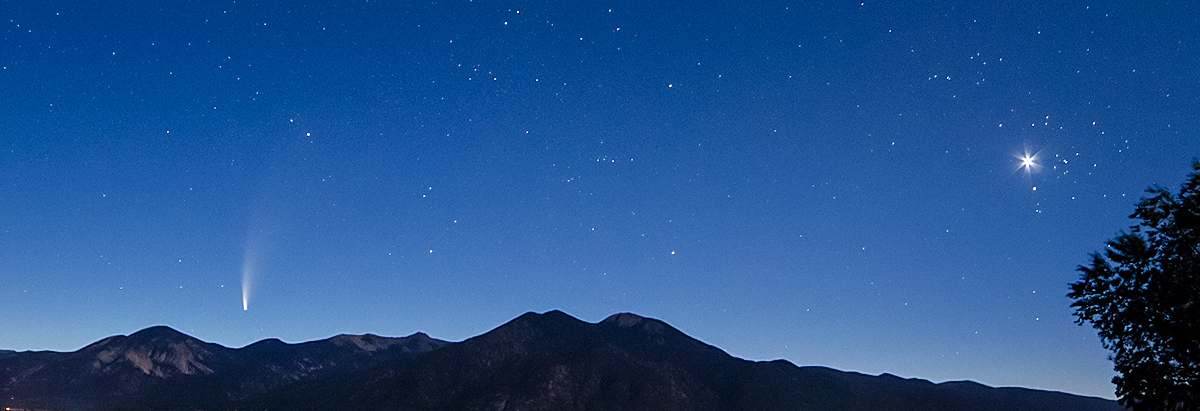
Welcome to taosastronomer.com!
offering
local "hands-on" observing
(visual and imaging) sessions and instruction
viewing and imaging from Rabbit Valley Observatory
a dark sky location on the mesa just west of Taos, NM
Image obtained February 24-25, 2017 through RVO's Explore Scientific’s 127mm ES127ED APO refractor with Explore Scientific’s .7 reducer/flattener lens resulting in an f/5.25 optical system -- using a Baader-modified Canon XSi DSLR and BackyardEOS image-acquisition software – 21 of 24 carefully selected and stacked 180-second RGB frames combined with multiple dark, flat and bias calibration frames shot at ISO 800 and totaling more than 210 minutes (63 minutes effective luminance) were used to create this image; optics driven by the Losmandy G-11 mount equipped with Ovision's precision RA worm gear, guided with a ZWO ASI 120MM Monochrome CCD camera through a 60mm guidescope using PhD2 guiding software and post-processed with DeepSkyStacker, CCDStack2 (DDP and deconvolution) and Photoshop CS3 s/w. Photographer's note: It is informative to compare this image above, taken with the superior Explore Scientific apochromatic refractor (3 optical elements, virtually no false color fringing) with my previous image of this very object, captured with a high quality but nevertheless a 2 optical element Williams' Optics Megrez achromatic refractor. The difference in the detail (especially noting the stars' lack of significant fringing coloration and general resolution) is extraordinary, due in part to the larger objective lens -- 127mm vs. 80mm -- but also due to the optical type (apochromatic vs. achromatic). Click this link for a discussion of telescopic lens optics. from the web: "In technical terms, M42 is an emission nebula. It’s being energized by a quartet of hot young stars, called the Trapezium, located near the center of the blister. Ultraviolet radiation produced by the Trapezium stars is heating the surrounding gas, making it fluoresce like the glowing gas in a neon bulb. These massive stars are also sculpting the nebula. Powerful winds of energetic particles stream from their hot “surfaces,” and, along with the stars’ searing light, these winds have been blowing a hole in the dark fog of the Orion Molecular Cloud for tens of thousands of years. It is only because the growing cavity has broken through the edge of the cloud that we can observe the wonders within."
[copyright Rabbit Valley Observatory/Willis Greiner, 2017 -- all rights reserved |
(all content copyright 2015-2019 Willis Greiner Photography, all rights reserved)